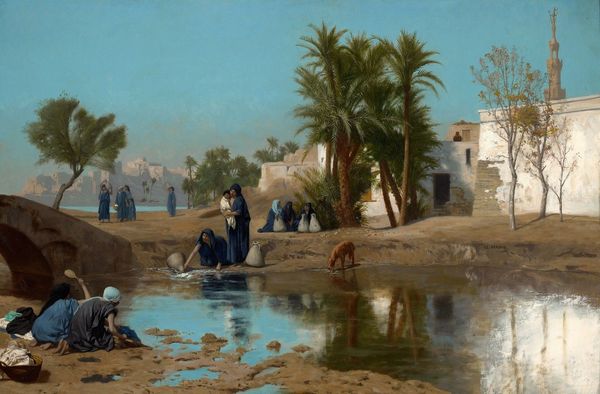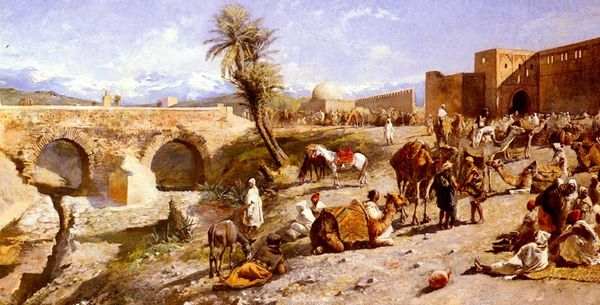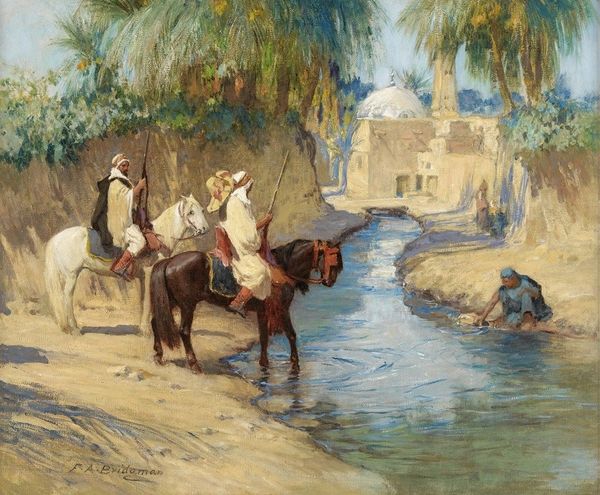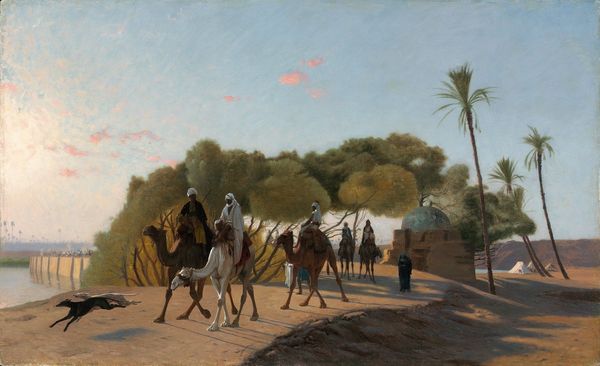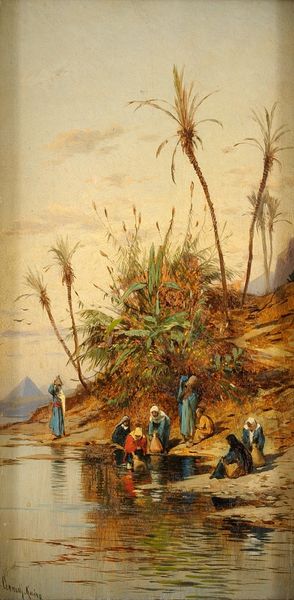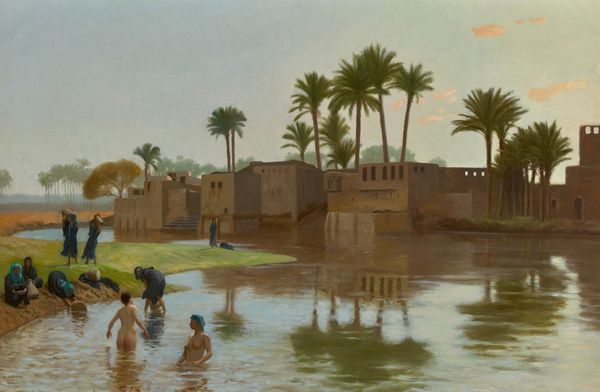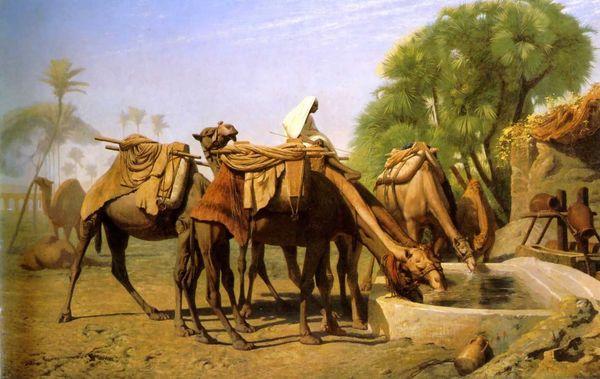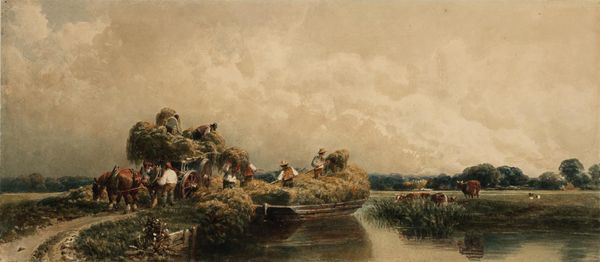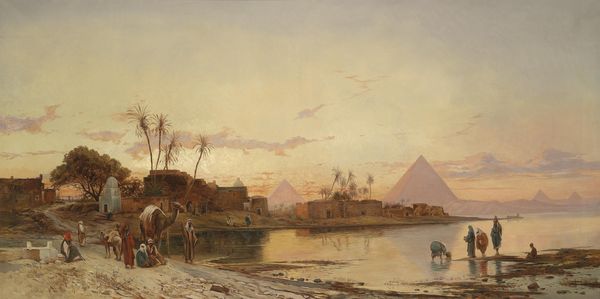
painting, oil-paint
#
gouache
#
painting
#
oil-paint
#
landscape
#
painted
#
oil painting
#
orientalism
#
genre-painting
Copyright: Public domain
Editor: Here we have “An Arab Caravan,” an oil painting by Jean-Léon Gérôme. The detail is striking; you can almost feel the heat radiating off the sand. It feels so serene, yet there’s a clear narrative unfolding with all these figures and animals. What stands out to you in terms of composition and form? Curator: Note the acute attention to detail in the textures – the rough hides of the camels, the shimmering surface of the water. The strong horizontal lines create a structured, almost frieze-like effect, dividing the painting into distinct registers. Observe how the tonal range creates a subtle transition between light and shadow, modulating depth without overwhelming the scene. How do you think this balanced tonal structure informs the composition? Editor: I see how the balanced tones create visual harmony, but also a bit of a disconnect. The landscape seems timeless, while the caravan itself is very much of a specific place and time. Curator: Precisely. The painting eschews dramatic flourishes in favor of meticulous rendering. Consider the relationship between the objects and the setting – how the shapes relate within a calculated visual plane. The brushwork creates detail in a relatively shallow picture plane. What is the resulting impression? Editor: It's incredibly skillful but feels a little detached, like a perfectly staged tableau. I appreciate how it shows off Gérôme’s ability to render minute detail with light and shadow, it also shows how even realistic looking works can reflect the painter's intentions above lived reality. Curator: An excellent point. This underscores how every element—line, color, texture—contributes to the construction of meaning, irrespective of its historical context.
Comments
No comments
Be the first to comment and join the conversation on the ultimate creative platform.
